Team: Detroit Red Wings
Team Building Status: Building
It’s been 5 years since Steve Yzerman was named GM of the Detroit Red Wings. Fans have been very patient with the ‘Yzerplan’ over that time, trusting that their former captain’s direction would bring them back into contention. The Red Wings stood pat at the deadline this year and are finally in a fight for their playoff lives down the stretch. Is this season’s relative success the tip of the iceberg?
Roster Ruminations
NHL Roster
The Red Wings resurgence this season has been powered by some incredible finishing. They’re shooting over 10% at 5v5 on the season, which has helped them overcome some dismal possession metrics where they rank 29th in 5v5 CF% and 20th in 5v5 SF%. The model prediction for next year shows a similar profile. The Wings are expected to struggle to hold their own in shot based metrics again. However this season’s shooting success seems to be unsustainably high as even predicted strong shooting isn’t likely to keep them treading water.
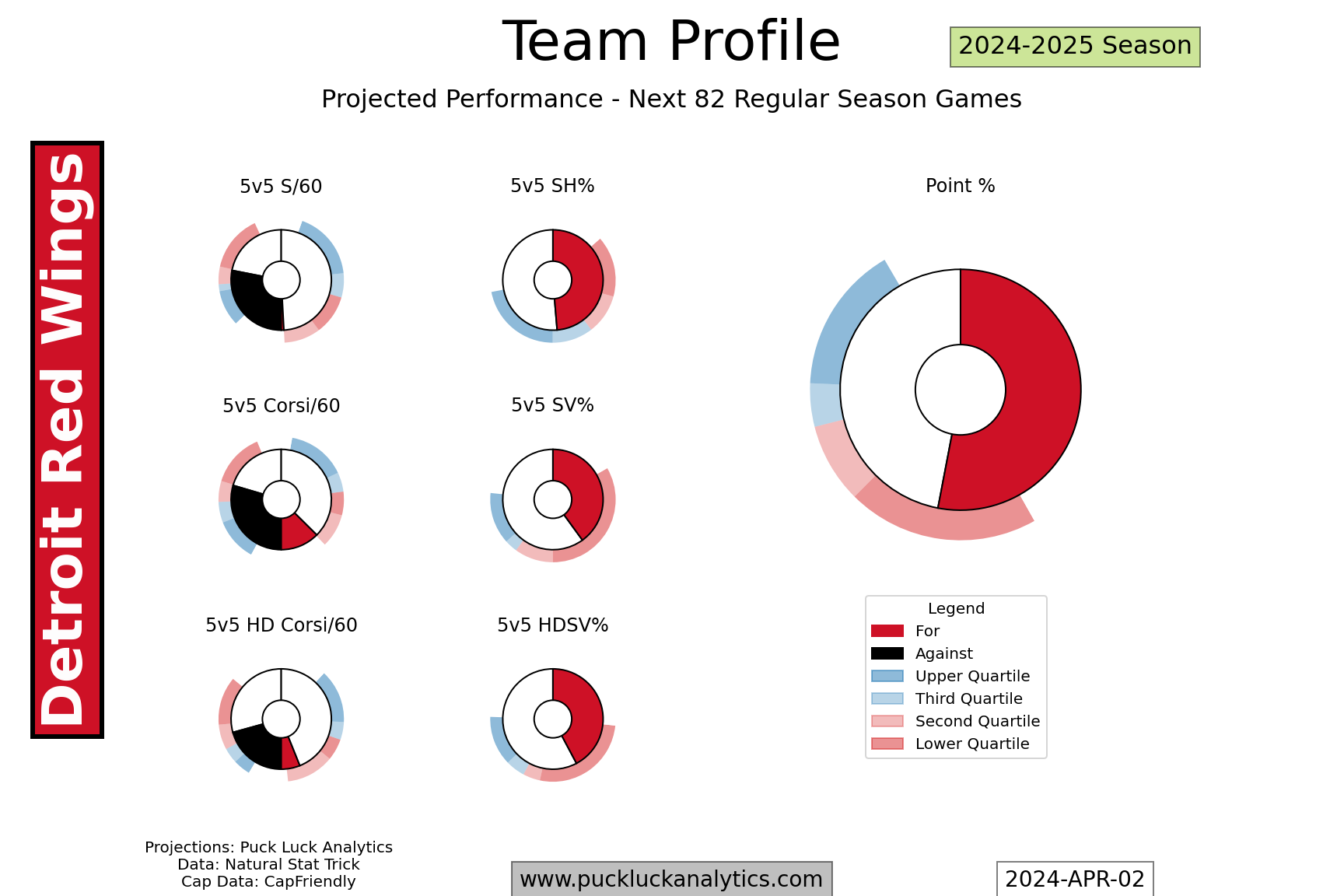
Salary Cap Management
The good news for the Red Wings is that they have plenty of cap flexibility moving forward. They have a number 2024 UFAs that have been stripped from the roster for the 24/25 season profile above, leaving about 25% of next year’s cap space available. They have also not yet committed to a long term core, with only Dylan Larkin, J.T. Compher and Michael Rasmussen under contract for more than three seasons after this year.
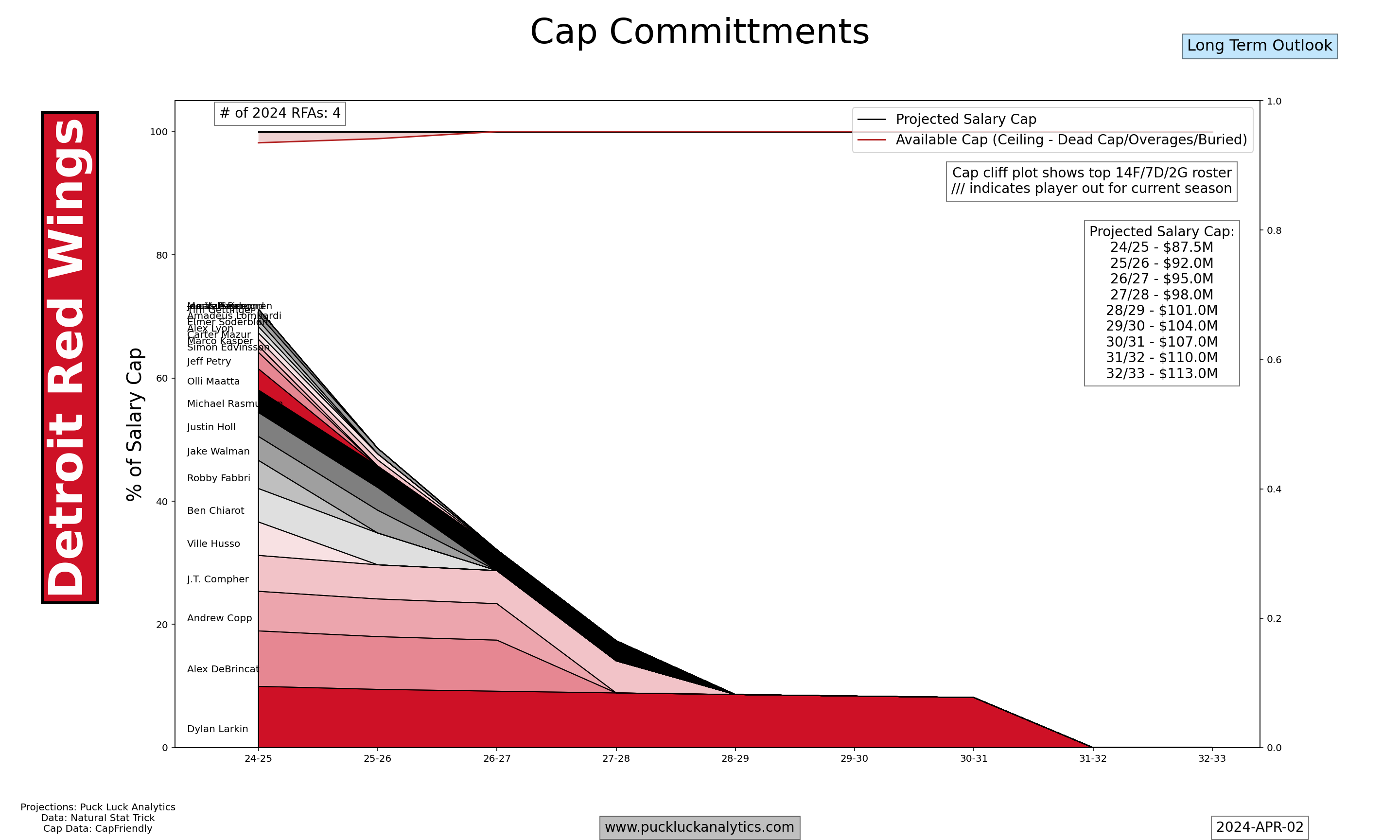
Future Assets
What might be the most concerning about the state of the Red Wings rebuild is that their pool of future assets is very pedestrian for a team that’s been rebuilding for a number of years. Hockey Prospecting ranks the Red Wings 19th in the NHL for their prospect pool. There are a lot of prospects in the pipeline but it lacks the star potential that one would hope for as they exit a rebuild. The have close to a baseline set of picks in the next three drafts, so they have some opportunity to continue to build from the draft but they aren’t stockpiling large quantities of picks at this point.
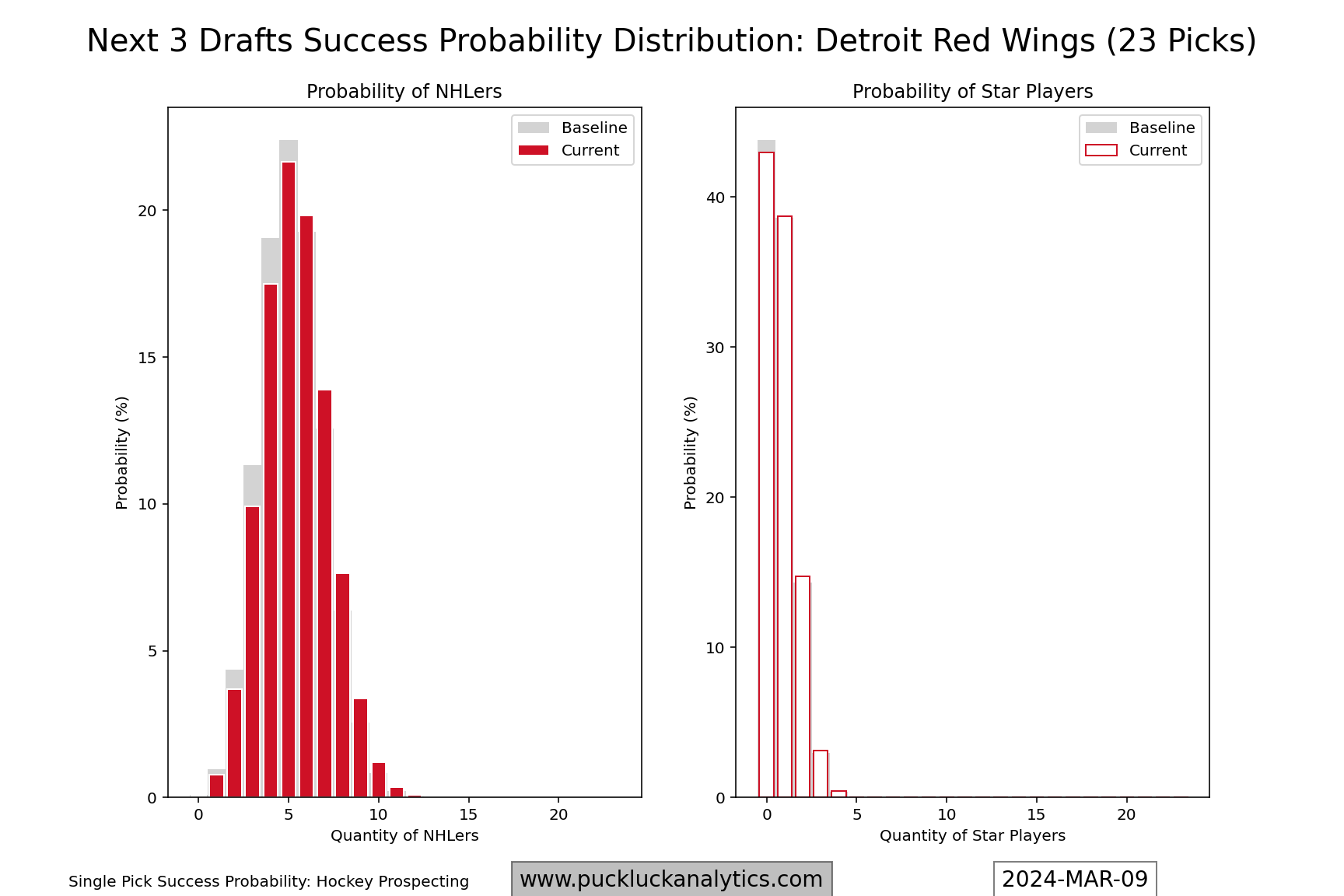
What’s Next?
Let’s take a look at the Red Wings roster in 4 year age cohorts:

What’s striking about this view of the Red Wings roster is just how heavy it is with older players. There are 17 NHL players in the Late Prime and Veteran cohorts combined, which is awfully high for a rebuilding team. The Veteran cohort does contain a few pending UFAs and the Red Wings would be wise to focus on bringing more of their developing talent into the NHL rather than extending or replacing their older players. Ben Chiarot and Jeff Petry are both under contract for next season and the Wings could look to move one or both of them to open up additional roster space for their emerging players.
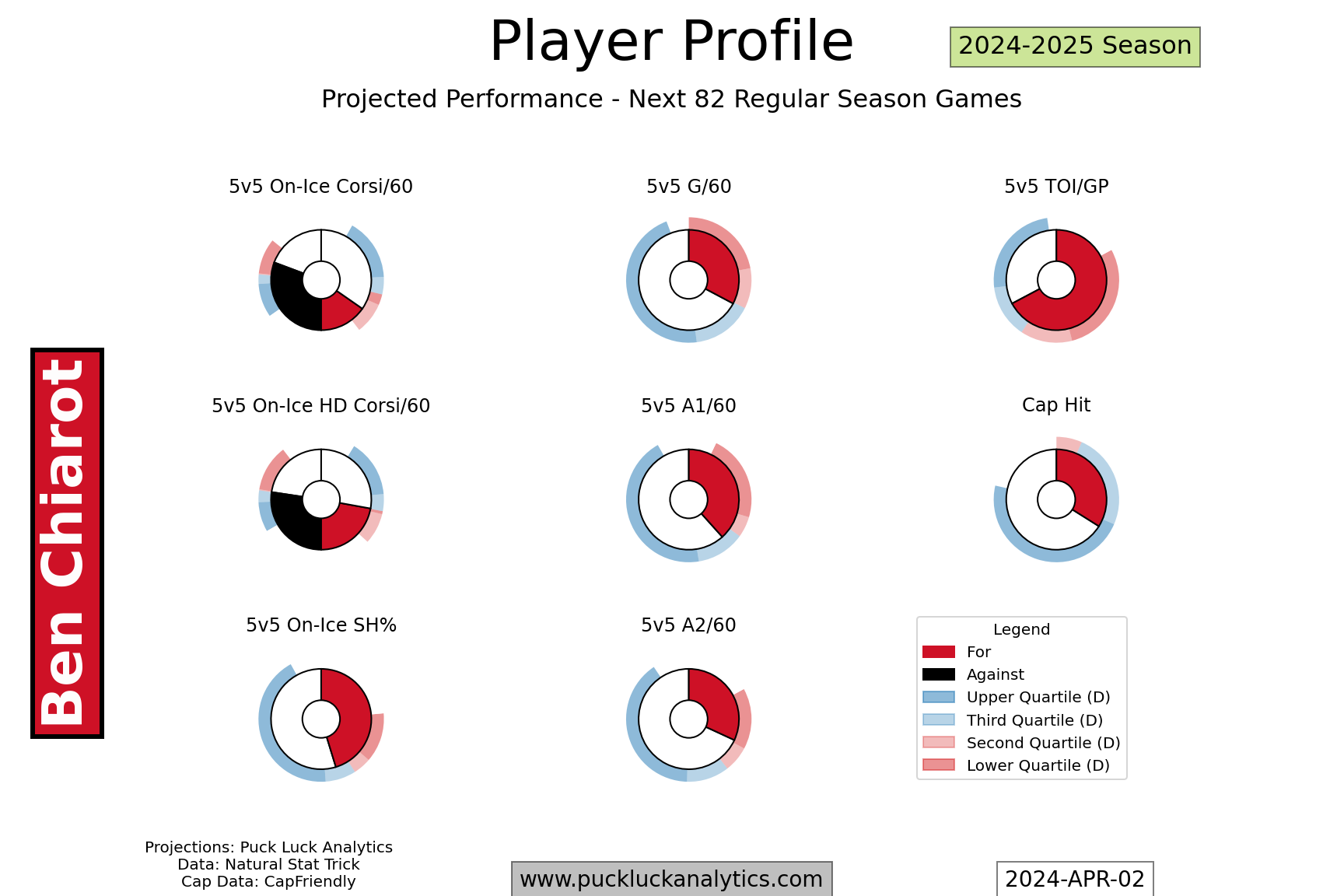
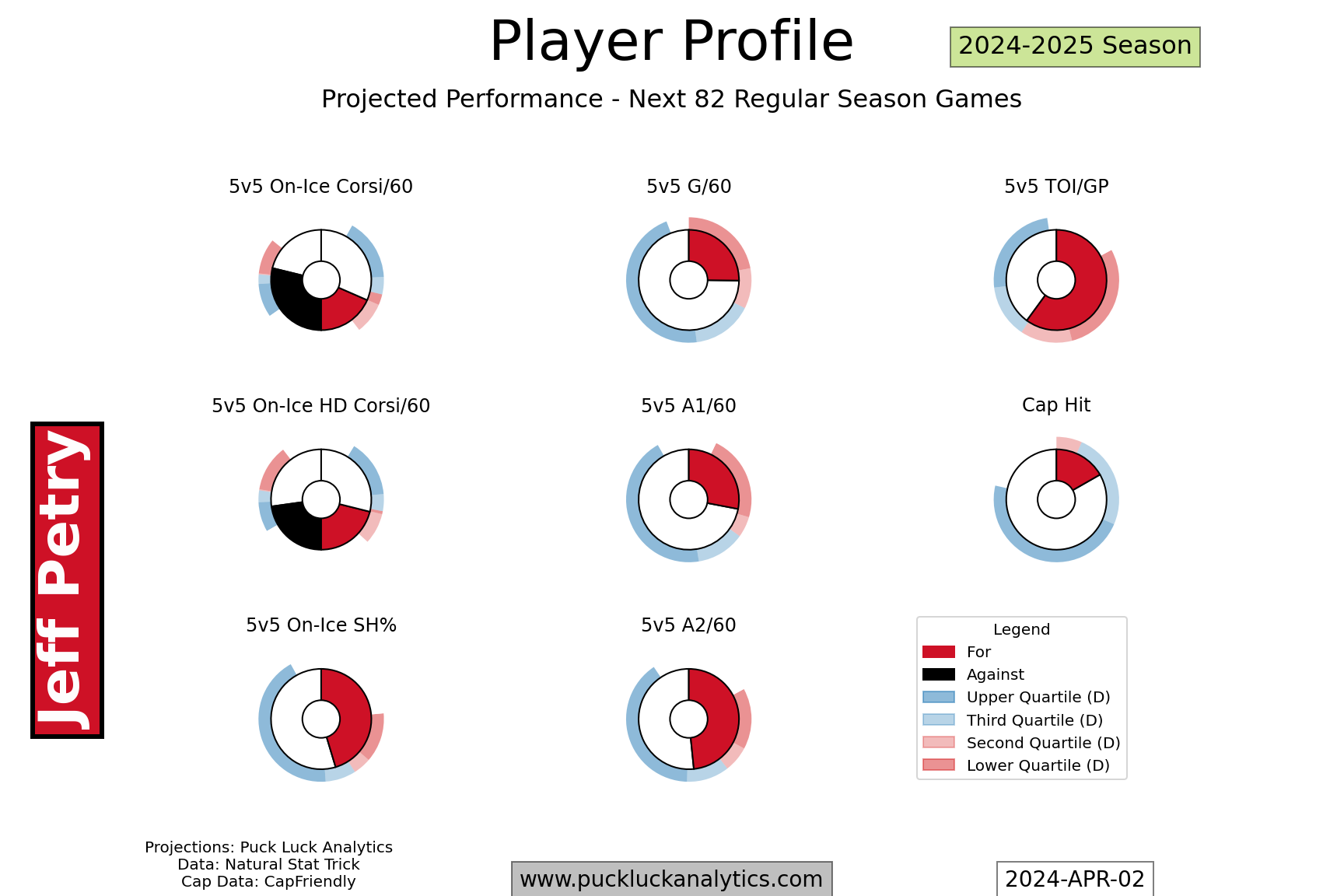
The Late Prime cohort is the one the Red Wings should focus on for a veteran mentorship element for their new core. There are some good pieces in this group, including captain Dylan Larkin, but the group lacks the star power required to lead a contending team. That should be fine for the Red Wings situation though. This group doesn’t need to lead the team out of the rebuild, it needs to provide a group of supporting actors with an element of veteran experience. The group may even be too large as is and the Wings could look at moving a few pieces out of this group now if it helps fill other needs.
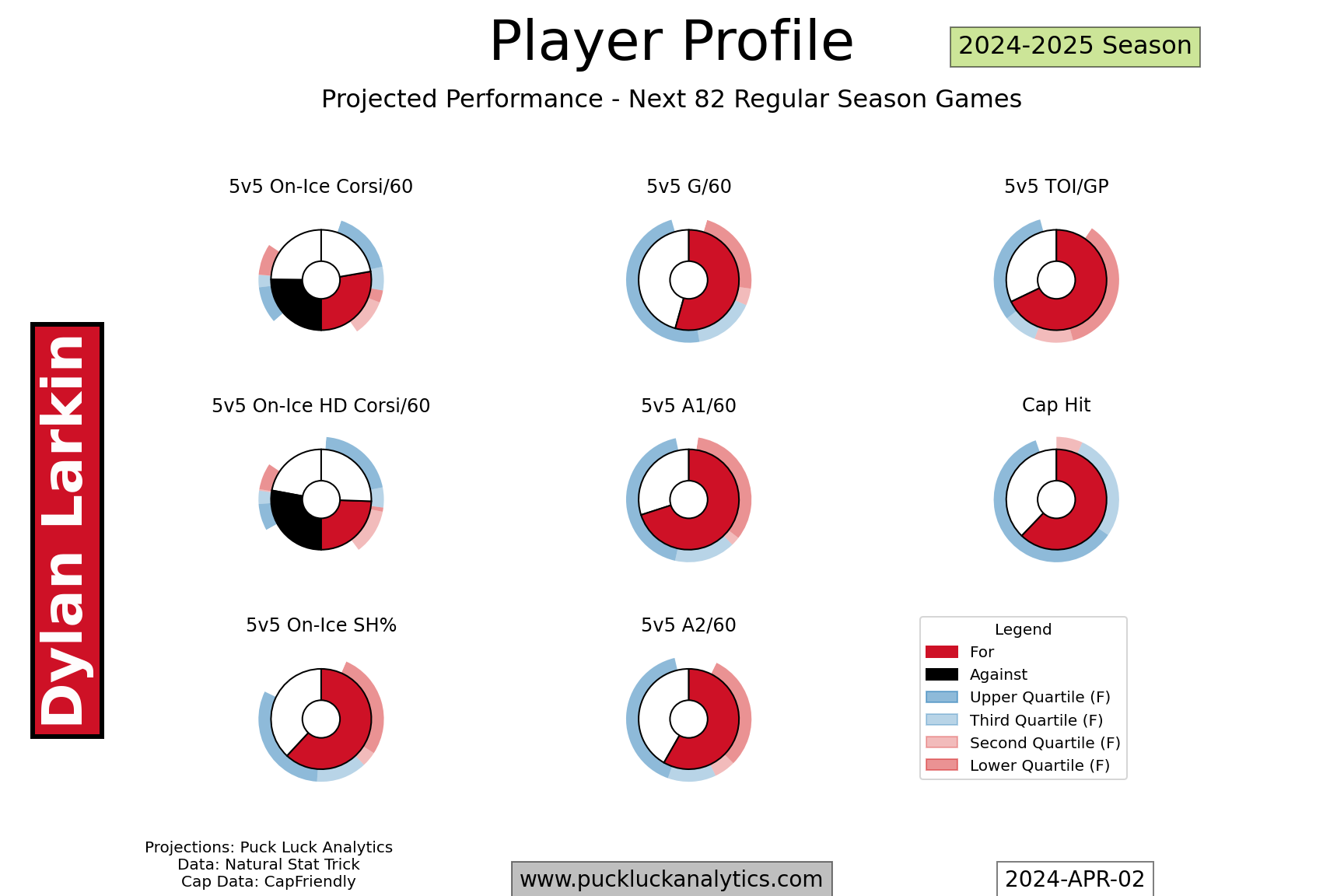
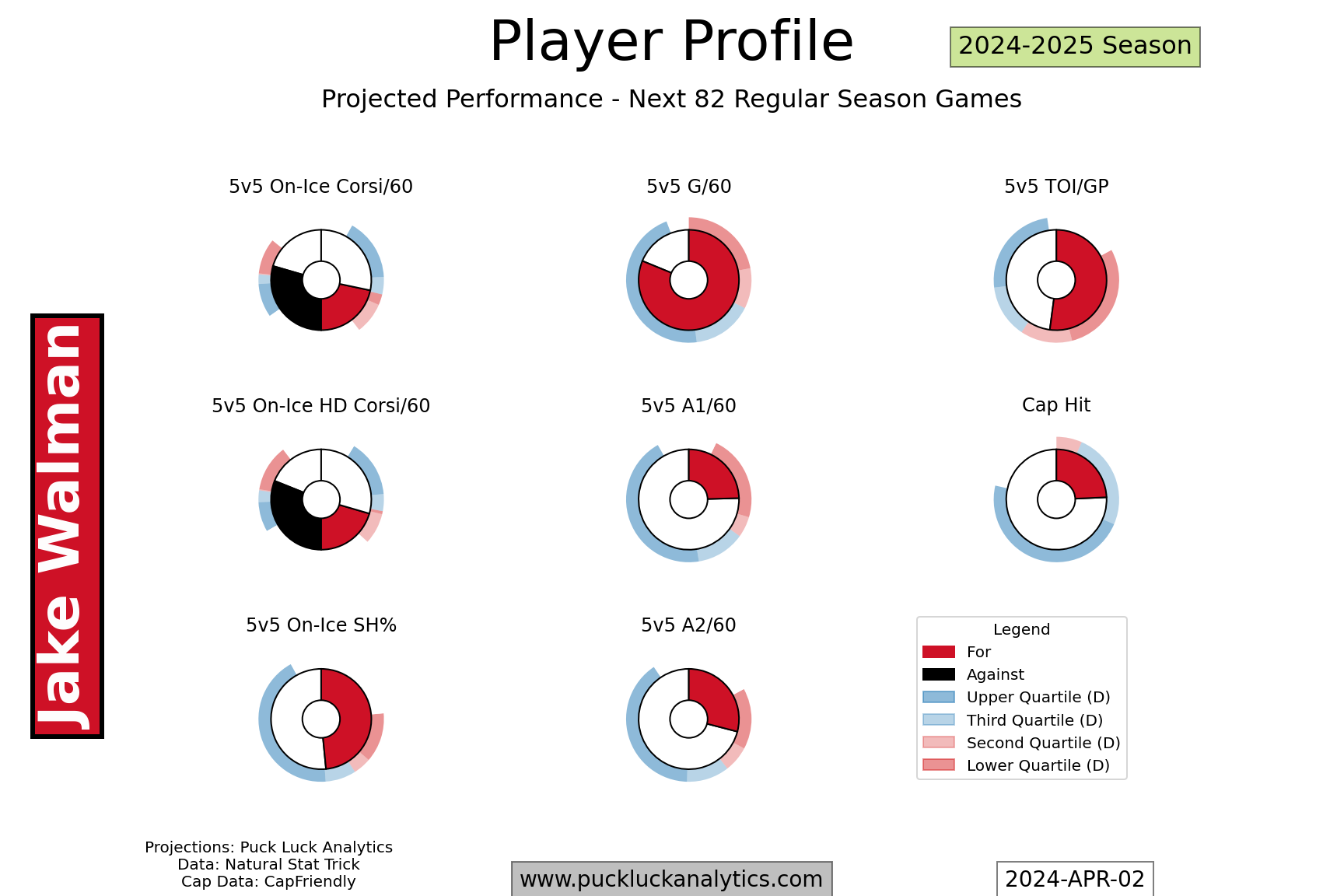
The Early Prime cohort is quite limited, with Alex DeBrincat as the only standout player in the group. That’s fine from a cohort roster building perspective, as the Red Wings can skip over this group and focus on building the next one. The Developing cohort is where the Red Wings success hinges. Lucas Raymond and Moritz Seider are now mainstays on the NHL roster, although the sparkle from their rookie campaigns has worn off. There are some other good prospects in the group but this is still the cohort that the Red Wings should focus on adding to.
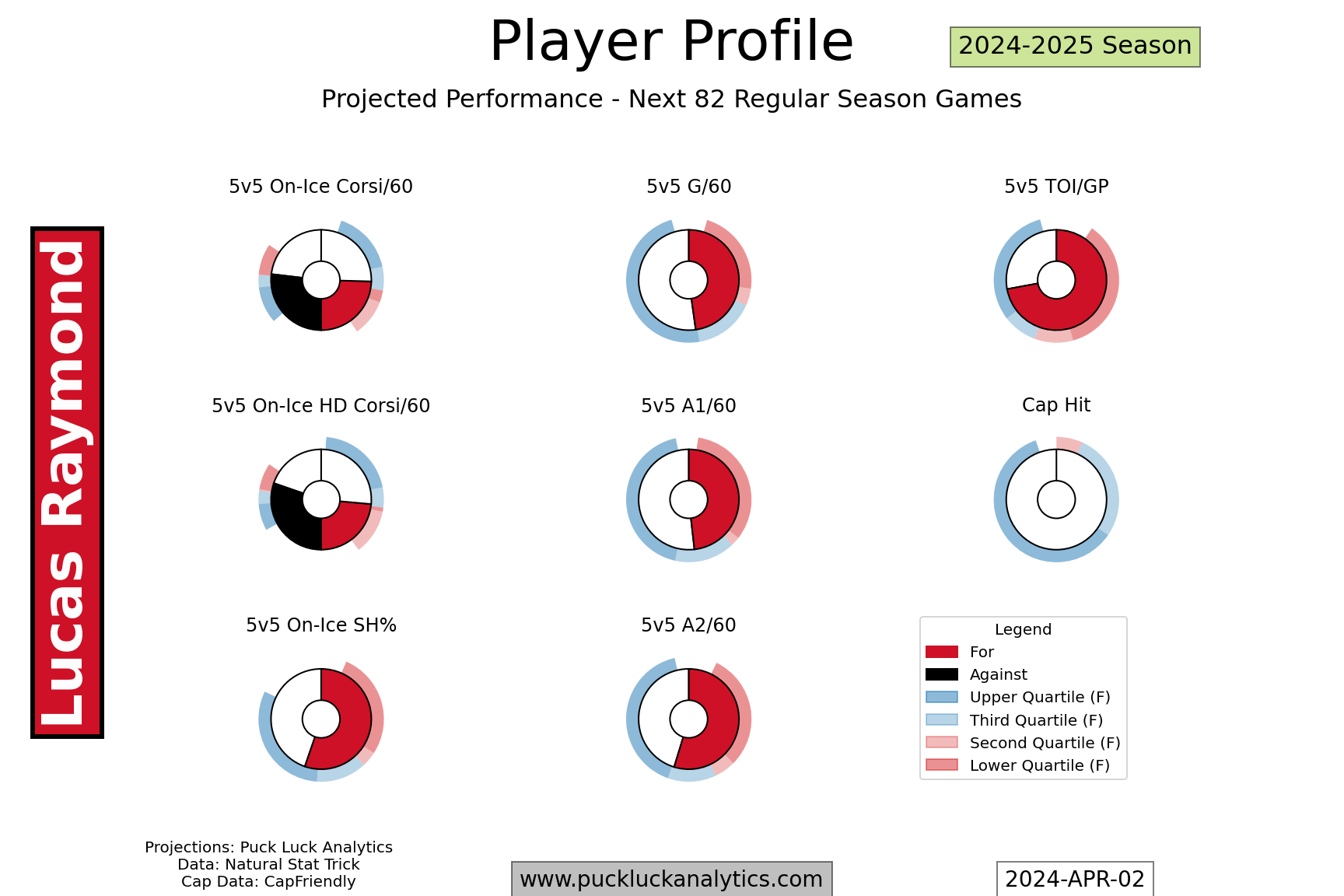
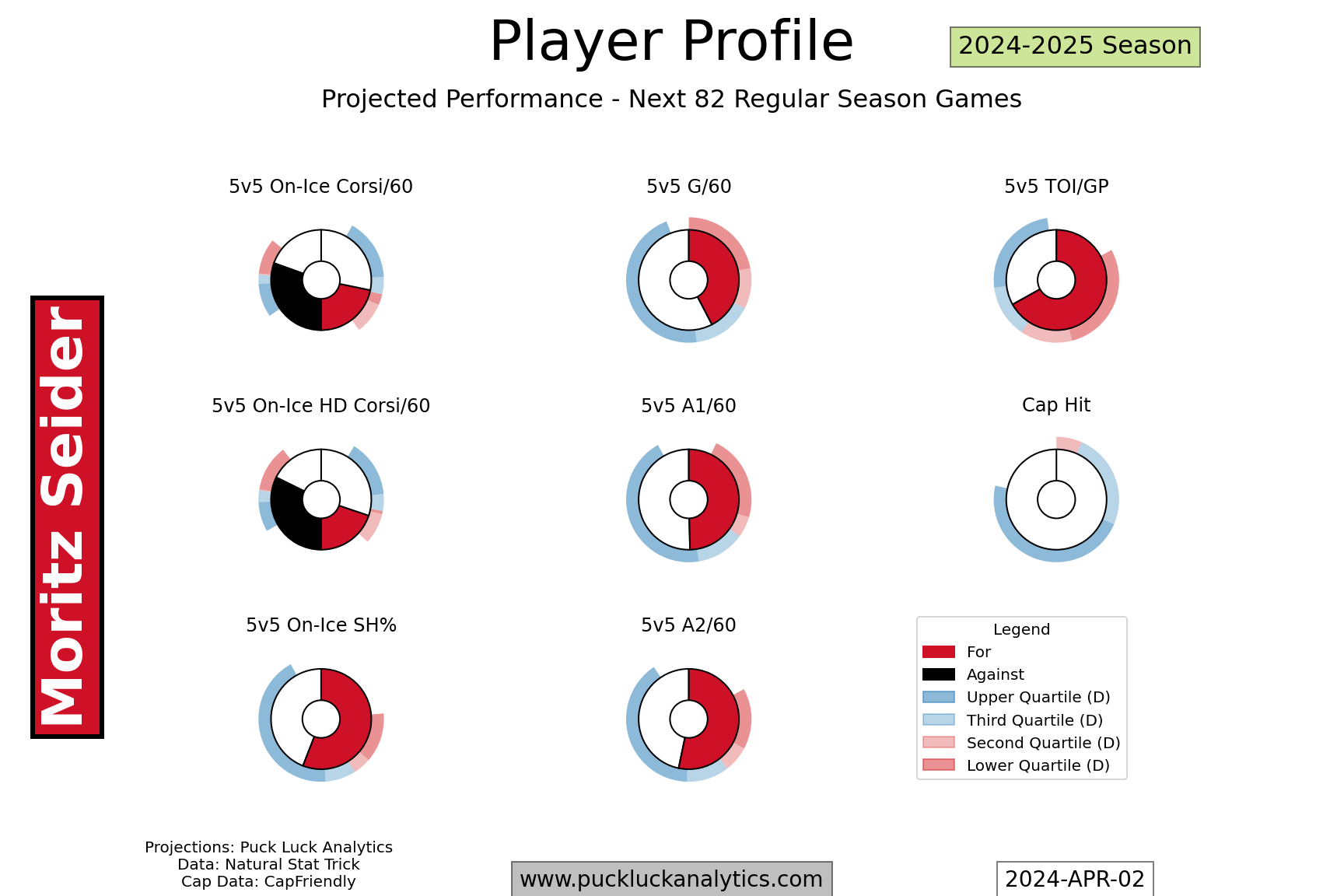
We’re going to find out if the Red Wings rebuild is a success in the next 1-2 years. The leading edge of their developing cohort is now 23 and nearing their prime. They need that cohort to become the main driver of the NHL roster soon and it’s where they should focus their effort on adding players. While volume of prospects in their system gives them a good pool of potential future NHLers, the star potential is a bit lacking. If an opportunity to acquire a legitimate star arises, the Red Wings should be all over it. They have the NHL quality veterans, large prospect pool and enough draft picks to make a big acquisition happen.



